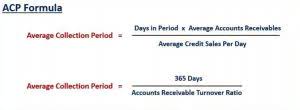
Vertical analysis can provide business owners and CFOs with valuable information, particularly when used with additional financial ratio analysis. To complete a vertical analysis for your balance sheet, you’ll need to perform this calculation for each line item that is currently listed on your balance sheet. By looking that the balance sheet above, you can see that vertical analysis percentage formula while your current asset total went down in accounts receivable, your fixed asset total went up. By looking at the balance sheet, you can see that the majority of your company’s assets are current, with only 25% of assets considered fixed, or long-term assets. Typically used for a single accounting period, vertical analysis is extremely useful for spotting trends.
- Regardless of the placement, the more important factor is to ensure the analysis clearly shows which period it is reflecting.
- Financial statement items are reported as percentages of one another to facilitate vertical analysis.
- Want to learn how Cube can help you conduct vertical analysis effectively (and in less time)?
- Vertical Analysis is a form of financial analysis where the line items on a company’s income statement or balance sheet is expressed as a percentage of a base figure.
- Let’s imagine that Company Y has a cost of products sold of $100,000 while having a gross sales amount of $700,000.
Understanding the Impact of Vertical Analysis on Profitability Evaluation
By the end of this guide, you’ll be equipped with the knowledge to interpret vertical analysis results and apply them in practical scenarios. Vertical analysis is exceptionally useful while charting a regression analysis or a ratio trend analysis. It enables the accountant to see relative changes in company accounts over a given period of time. To reiterate from earlier, dividing by total assets is akin to dividing by the sum of liabilities and equity. In our case, half of the company’s asset base comprises PP&E, with the rest coming from its current assets.

Review of expenses framework
So if we had multiple years of historical data, it is recommended to organize the percentage calculations into a single section on the far right or below the financials with the timing of the periods aligned. Starting from the revenue line item, each line item on the income statement – if deemed appropriate – is divided by revenue (or the applicable core metric). When compared to one another, the balance sheets of companies with values of one billion and half a million dollars might be difficult to interpret.
Calculating an Amount from a Total and Percentage
Microsoft Excel is a powerful tool for working with numbers and performing mathematical calculations. Whether you’re analyzing sales data, creating a budget, or tracking student grades, knowing how to calculate percentages in Excel is essential. In this guide, we’ll cover the key formulas you need to master percentage calculations in Excel. You can apply the information you gather through a vertical analysis of your financial documents by comparing particular accounting periods to each other.

Everything You Need To Build Your Accounting Skills
Vertical analysis in accounting is sometimes used in conjunction with horizontal analysis to get a broader view of your company accounts. The main benefit of vertical analysis is that it helps businesses determine whether certain items consistently increase or decrease over time. Additionally, this fundamental analysis method helps businesses identify trends and patterns in their financial statements.
Calculating the Percentage of a Total
- Let’s look at an example to see how applying the vertical analysis formula might work in the real world.
- In vertical analysis, each line item on a financial statement is expressed as a percentage of a chosen base figure from that statement.
- The main benefit of vertical analysis is that it helps businesses determine whether certain items consistently increase or decrease over time.
- Strike offers free trial along with subscription to help traders, inverstors make better decisions in the stock market.
Would you like to review the financial performance from the past months/years or demonstrate your business’s financial health to stakeholders? Recognizing the objective will assist you in determining the appropriate foundation for your calculations. This financial analysis can help you build a solid financial report by comparing the percentages to the budgeted expectations. It’s a key responsibility of the FP&A team to keep track of this and foresee how different strategies might affect the company’s finances in the long run.
Step 5: Compare with industry benchmarks

Instead, using a variety of analysis techniques and financial analysis software as ‘tools in the toolbox’ can provide a comprehensive view of the company, leading to more informed and effective decisions. For example, if you see the various expense line items in the income statement as a percentage of sales. This shows each cash outflow or inflow as a percentage of the total cash inflows of the business. By analyzing these vertical percentages, financial analysts can gain insights into the asset structure, capital structure, and the relative significance of different components within the balance sheet. We’ve now completed our vertical analysis for our company’s income statement and will move on to the balance sheet. Performing vertical analysis creates the so-called “common size” income statement and the “common size” balance sheet.
Based on the information above, Jackson Widget Company’s total assets are $190,000. That’s $100,000 in cash plus $40,000 in accounts receivable plus $50,000 of fixed assets. Vertical analysis can be particularly helpful if looking to determine cash and accounts receivable balances over several accounting periods. For example, many businesses use vertical analysis to compare their financial results to those of other businesses in their industry.
Step 1. Historical Income Statement and Balance Sheet Data
For example, a company may have significant one-time expenses or revenues that distort the overall picture when viewed purely in percentage terms. On an income statement for a company with Rs. 100 crores total revenue, if cost of goods sold was Rs. 60 crores and operating expenses were Rs. 20 crores, the vertical analysis percentages would be. Vertical analysis of a balance sheet can be a powerful tool to understand your company’s performance or how two businesses compare. Try it with your next financial analysis and see if it provides useful insights or helps you track progress toward goals.